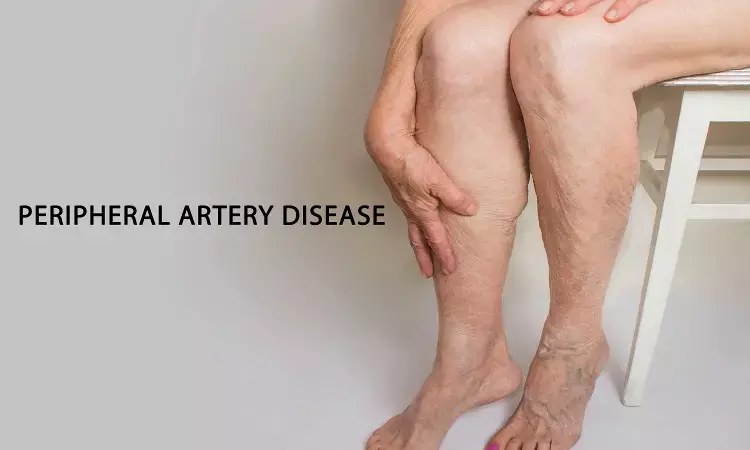- Home
- Medical news & Guidelines
- Anesthesiology
- Cardiology and CTVS
- Critical Care
- Dentistry
- Dermatology
- Diabetes and Endocrinology
- ENT
- Gastroenterology
- Medicine
- Nephrology
- Neurology
- Obstretics-Gynaecology
- Oncology
- Ophthalmology
- Orthopaedics
- Pediatrics-Neonatology
- Psychiatry
- Pulmonology
- Radiology
- Surgery
- Urology
- Laboratory Medicine
- Diet
- Nursing
- Paramedical
- Physiotherapy
- Health news
- Fact Check
- Bone Health Fact Check
- Brain Health Fact Check
- Cancer Related Fact Check
- Child Care Fact Check
- Dental and oral health fact check
- Diabetes and metabolic health fact check
- Diet and Nutrition Fact Check
- Eye and ENT Care Fact Check
- Fitness fact check
- Gut health fact check
- Heart health fact check
- Kidney health fact check
- Medical education fact check
- Men's health fact check
- Respiratory fact check
- Skin and hair care fact check
- Vaccine and Immunization fact check
- Women's health fact check
- AYUSH
- State News
- Andaman and Nicobar Islands
- Andhra Pradesh
- Arunachal Pradesh
- Assam
- Bihar
- Chandigarh
- Chattisgarh
- Dadra and Nagar Haveli
- Daman and Diu
- Delhi
- Goa
- Gujarat
- Haryana
- Himachal Pradesh
- Jammu & Kashmir
- Jharkhand
- Karnataka
- Kerala
- Ladakh
- Lakshadweep
- Madhya Pradesh
- Maharashtra
- Manipur
- Meghalaya
- Mizoram
- Nagaland
- Odisha
- Puducherry
- Punjab
- Rajasthan
- Sikkim
- Tamil Nadu
- Telangana
- Tripura
- Uttar Pradesh
- Uttrakhand
- West Bengal
- Medical Education
- Industry
High intensity exercise causing ischemic leg pain beneficial for PAD patients: JAMA

USA: The use of low-intensity walking exercise is significantly less effective than high-intensity home-based exercise in patients with peripheral artery disease (PAD), finds a recent study in the journal JAMA. Low-intensity walking exercise was equivalent to nonexercise control for improving 6-minute walk distance.
According to the study, in people with PAD, walking for exercise at an intensity that induces ischemic leg pain (caused by restricted blood flow) improves walking performance -- distance and length of time walking. Walking at a slow pace that does not induce ischemic leg symptoms is no more effective than no exercise at all.
These findings do not support the use of low-intensity home-based walking exercise for improving objectively measured walking performance in patients with PAD.
In people with lower-extremity peripheral artery disease, supervised high-intensity walking exercise that induces ischemic leg symptoms is the first-line therapy for people which has a poor adherence. Mary M. McDermott, Feinberg School of Medicine, Northwestern University, Chicago, Illinois, and colleagues aimed to determine whether low-intensity home-based walking exercise at a comfortable pace significantly improves walking ability in people with PAD vs high-intensity home-based walking exercise that induces ischemic leg symptoms and vs a nonexercise control.
For the purpose, the researchers conducted multicenter randomized clinical trial at 4 US centers and including 305 participants.
People with PAD were randomized to either low-intensity walking exercise (n = 116), high-intensity walking exercise (n = 124), or nonexercise control (n = 65) for 12 months. Both exercise groups were asked to walk for exercise in an unsupervised setting 5 times per week for up to 50 minutes per session wearing an accelerometer to document exercise intensity and time. The low-intensity group walked at a pace without ischemic leg symptoms. The high-intensity group walked at a pace eliciting moderate to severe ischemic leg symptoms.
Accelerometer data were viewable to a coach who telephoned participants weekly for 12 months and helped them adhere to their prescribed exercise. The nonexercise control group received weekly educational telephone calls for 12 months.
Among 305 randomized patients, 250 (82%) completed 12-month follow-up.
Key findings of the study include:
- The 6-minute walk distance changed from 332.1 m at baseline to 327.5 m at 12-month follow-up in the low-intensity exercise group and from 338.1 m to 371.2 m in the high-intensity exercise group (within-group mean change, 34.5 m and the mean change for the between-group comparison was −40.9 m.
- The 6-minute walk distance changed from 328.1 m at baseline to 317.5 m at 12-month follow-up in the nonexercise control group, which was not significantly different from the change in the low-intensity exercise group.
- Of 184 serious adverse events, the event rate per participant was 0.64 in the low-intensity group, 0.65 in the high-intensity group, and 0.46 in the nonexercise control group.
- One serious adverse event in each exercise group was related to study participation.
"Among patients with PAD, low-intensity home-based exercise was significantly less effective than high-intensity home-based exercise and was not significantly different from the nonexercise control for improving 6-minute walk distance," wrote the authors.
"These results do not support the use of low-intensity home-based walking exercise for improving objectively measured walking performance in patients with PAD," they concluded.
Reference:
The study titled, "Effect of Low-Intensity vs High-Intensity Home-Based Walking Exercise on Walk Distance in Patients With Peripheral Artery Disease: The LITE Randomized Clinical Trial," is published in the journal JAMA.
DOI: https://jamanetwork.com/journals/jama/fullarticle/2778112
Dr Kamal Kant Kohli-MBBS, DTCD- a chest specialist with more than 30 years of practice and a flair for writing clinical articles, Dr Kamal Kant Kohli joined Medical Dialogues as a Chief Editor of Medical News. Besides writing articles, as an editor, he proofreads and verifies all the medical content published on Medical Dialogues including those coming from journals, studies,medical conferences,guidelines etc. Email: drkohli@medicaldialogues.in. Contact no. 011-43720751


